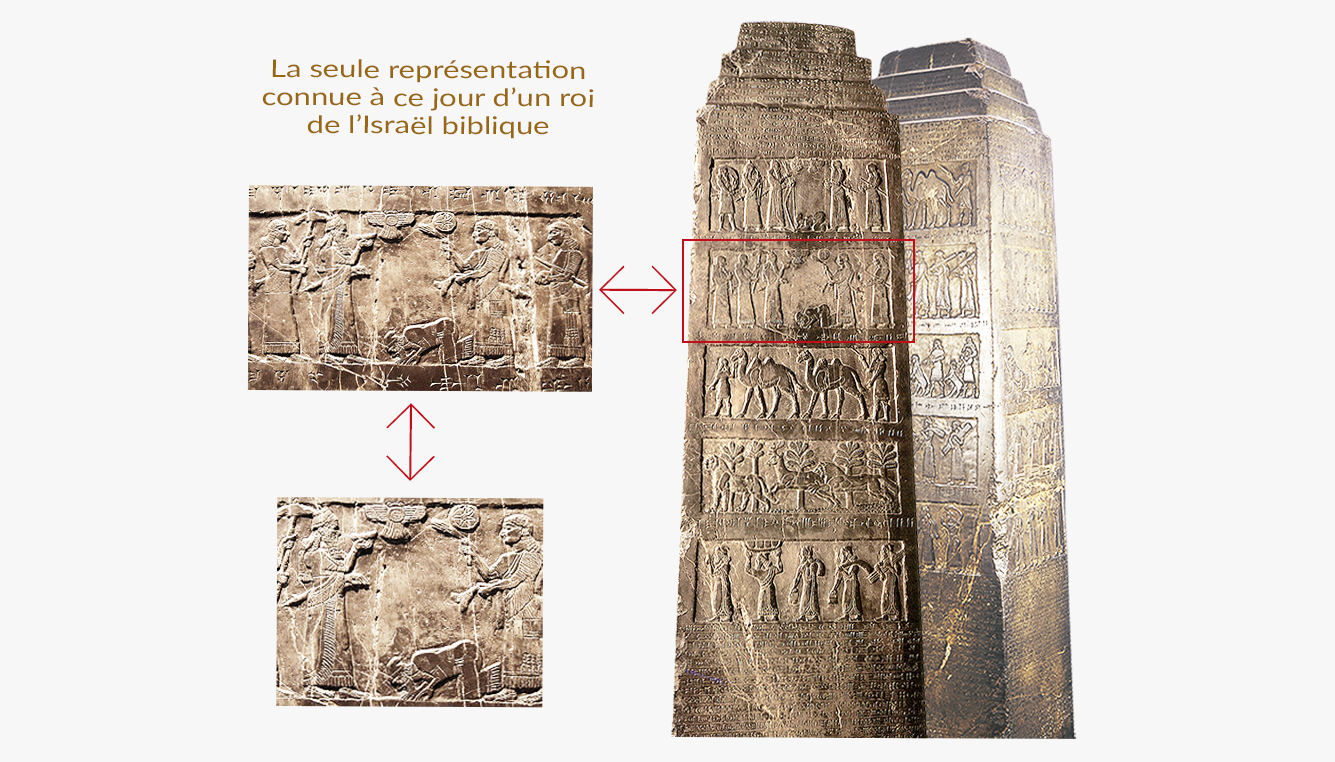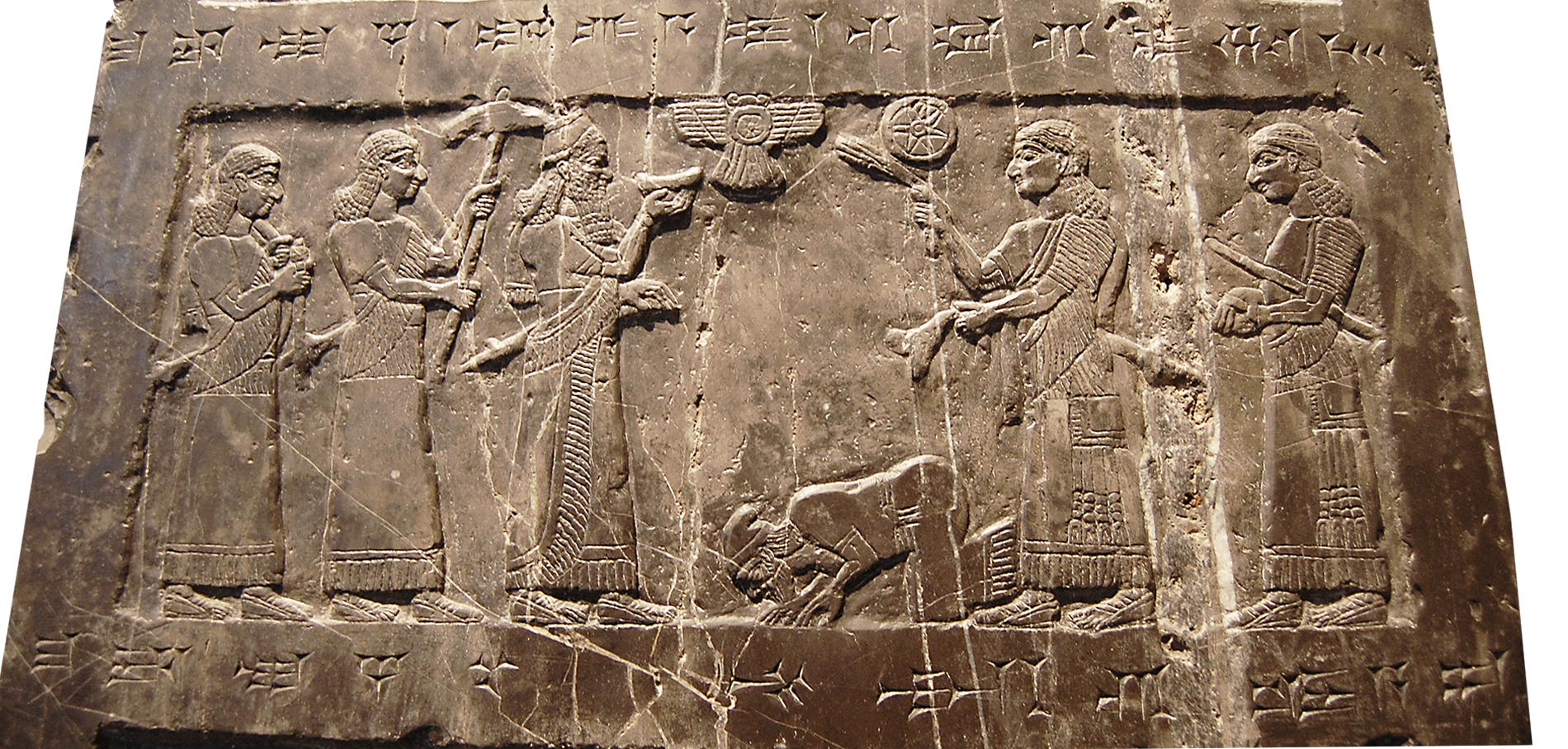
Bible, History, Archaeology
Bible,
History,
Archaeology
Salmanasar III,
the black obelisk
Salmanasar III, son of Assournasirpal, reigned from approximately 859 to 824 B.C. He was an energetic man and the first Assyrian ruler to enter into conflict with the Israelites.
In the first year of his reign, he set out on a campaign, crossing the Euphrates and ravaging the Hittite kingdom as far as the Great Sea (Mediterranean Sea). To oppose his invasions, the Syrians formed a front line encompassing Damascus, Hamath and twelve coastal kings. Several neighboring nations, including Israel, reinforced this coalition.
the battles of Salmanasar III

Image opposite: statue of Salmanazar III. Incription:
... Salmanazar, the great king, the mighty king, king of all the four regions, ... the mighty rival of the princes of the whole earth (the universe) the great ones, the kings, son of Assur-Nasirapli, king of the universe, king of Assyria, grandson of Tukulti-Ninura, ... Istanbul Museum, Turkey. © Gryffindor.
It was at the archaeological site of Kalkhu (now Nimrud), the biblical Kalah, that English archaeologist Henry Layard discovered a black limestone monolith in 1846 during an archaeological dig in northern Iraq. It is an obelisk 1.98 m high and 0.45 m wide, the top of which appears as the façade of a Mesopotamian temple. This impressive obelisk is now on display at the British Museum in London.
Its four faces are covered with high reliefs and cuneiform inscriptions. A study of the texts and engraved drawings reveals that this obelisk dates from the reign of Salmanasar III, and seems to have been erected in 825 BC during a period of civil war. The texts and high reliefs concern the king's military campaigns during the thirty-three years of his reign, as well as the tributes paid by neighboring countries, including various animals (camels, monkeys, rhinoceroses and elephants) and exotic plants.
The five-row black obelisk of Salmanasar III.
At the bottom of the stele, we can still read: ... tribute from Jehu, son of Omri: from him I received silver, gold, a golden cup, a golden vase with a marked bottom, golden goblets, golden tables, golden bars, a staff for the king's hand, and javelins .... © Théo Truschel.
the inscriptions on the black obelisk
At the top and base of the obelisk, on all four sides, are inscribed 190 lines depicting the main events of his military campaigns from Cilicia to the Persian Gulf, from the Mediterranean to Elam and, in particular, the campaigns against Adad-Idri of Damascus, presumably the Ben Hadad I of the Bible, in 853 and 848 BC, as well as those against the Damascene king Hazael in 841 and 838. The carved high reliefs on this monument are divided into five tribute scenes, each comprising four successive panels following the obelisk's circumference, as well as a line of cuneiform signs as a caption to the subject depicted.
With regard to the second scene, it is interesting to note an event that is not mentioned in the Bible, but which completes it. It concerns the tribute offered by Jehu, king of Israel, to Salmanasar III around 841 BC..
Concerning Hazael and Jehu, Salmanasar III declares:
In the eighteenth year of my reign, I crossed the Euphrates for the sixteenth time. Hazael of Damascus put his trust in his great army, and gathered his many troops, choosing Mount Senir (Saniru), opposite Lebanon, as his stronghold. I fought him and inflicted a great defeat, killing 16,000 of his most experienced soldiers with the sword.
[…] I then went as far as the Balisari mountains, near the sea, and there I erected a stele, on which I engraved my image as king.
It was at this time that I received the tribute of the inhabitants of Tyre and Sidon, and Jehu, son of Omri.
The conquests mentioned on the obelisk
1. Sua de Gilzanu Gilzanu is located in Armenia, east of Lake Ourmia.
2. Jehu de Bit Omri Bit Omri representing the kingdom of Israel.
3. An anonymous ruler of Musri Musri: the territory named Musri is obscure, as its literal meaning corresponds to «borderlands» or «frontiers». However, if one of the animals offered to Salmanasar III, the hippopotamus, is to be believed, it would be Egypt.
4. Suhu's Marduk-apil-usur Suhu is located in the central Euphrates region of Syria and Iraq.
5. Qarparunda du Patin The Patin, formerly known as Hattin, comprising territories from north-west Syria to the Turkish border.


